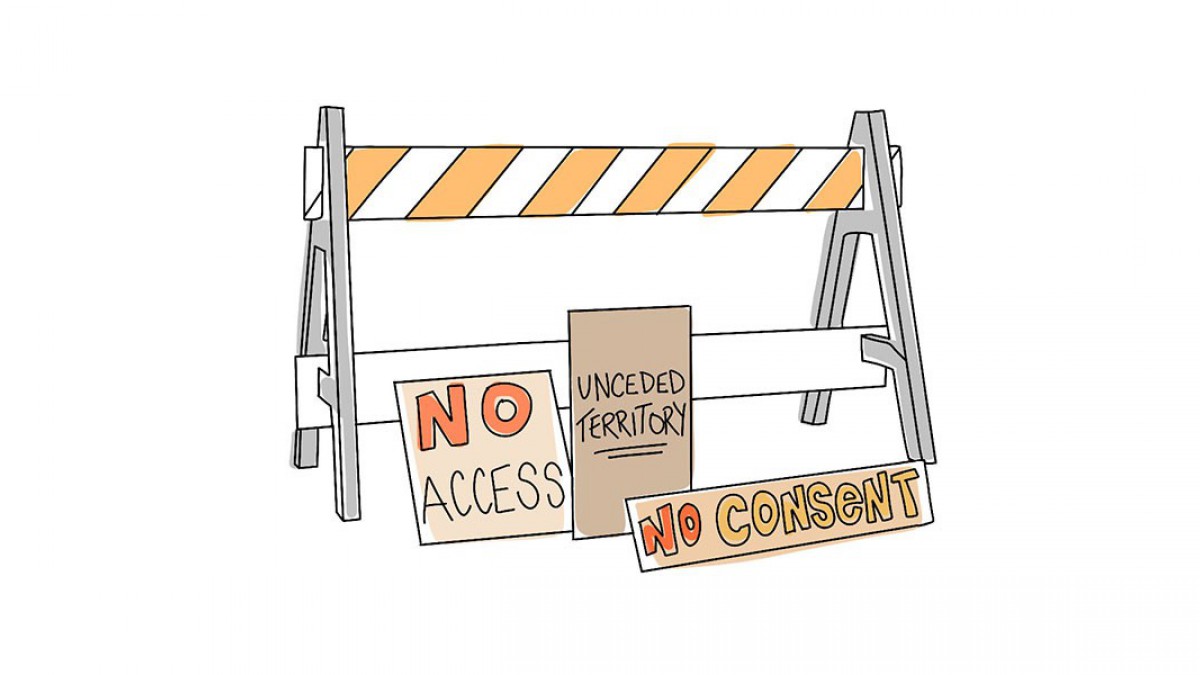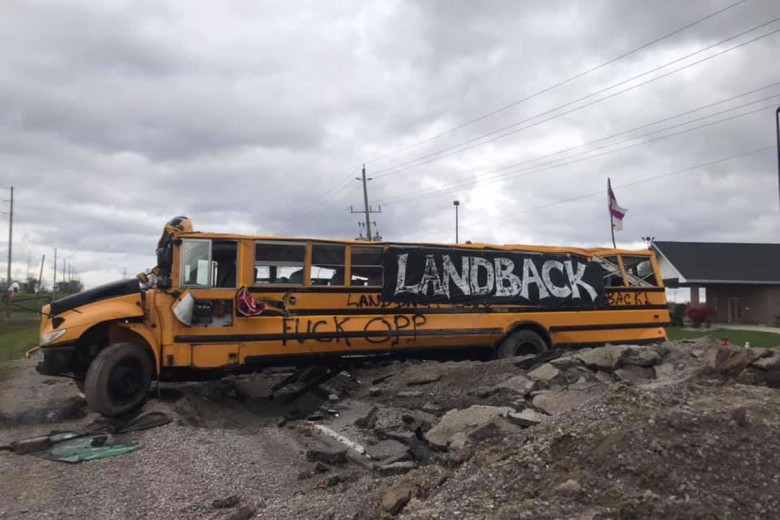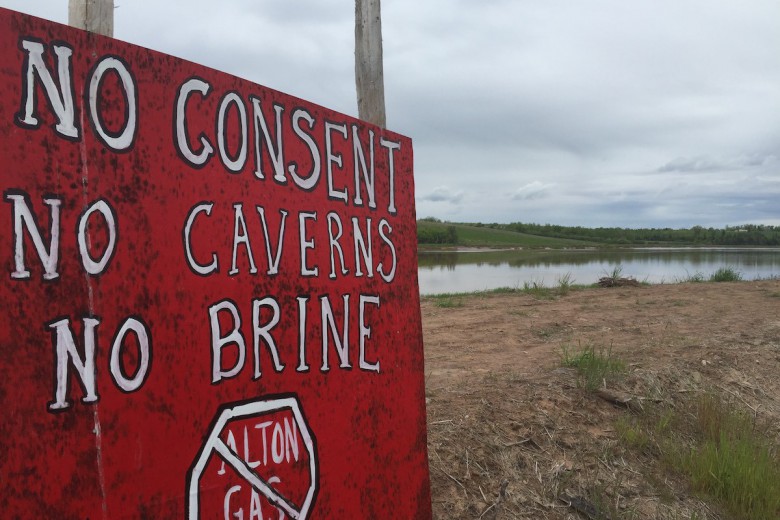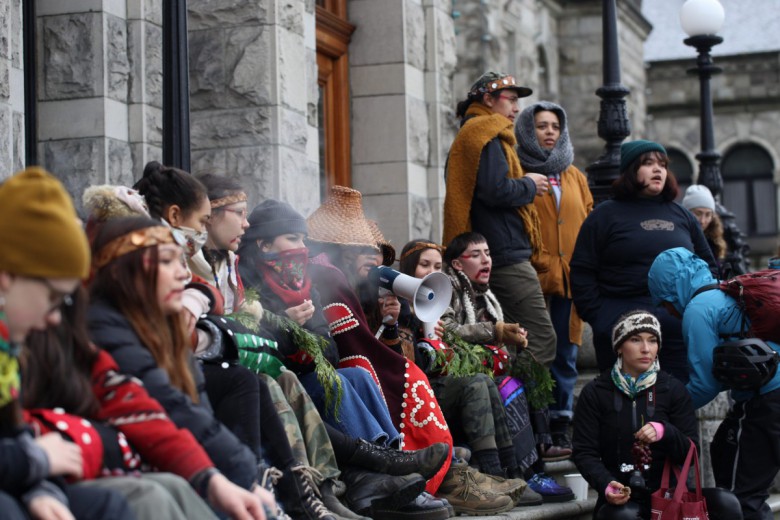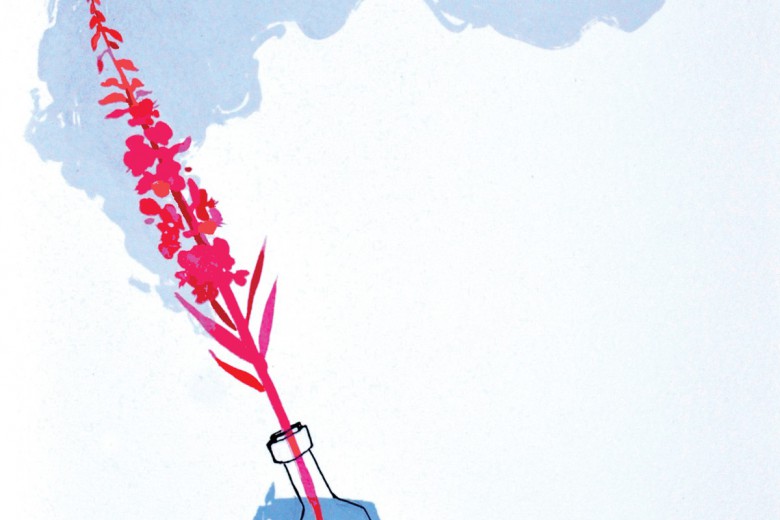1921
Jean Baptiste takes a stand. As settlers are increasingly given Native land by the government, a Wet’suwet’en man refuses to leave his home and promises to physically fight until the end for it. The Department of Indian Affairs backs down and creates the “Jean Baptiste #28” reserve, which still exists today.
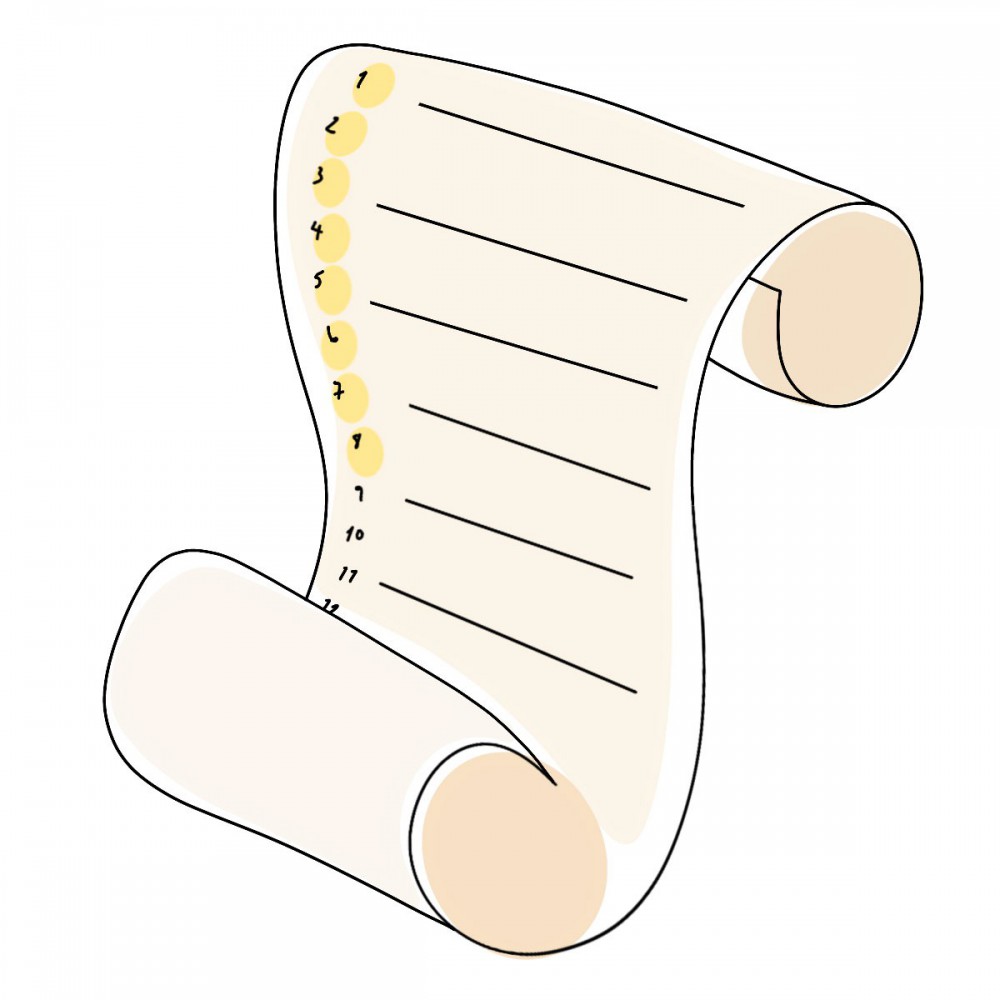
1938
The Métis Population Betterment Act is passed. Through negotiations with the Alberta government, Métis community organizers, including Malcolm Norris and James Brady, secure 12 settlements for Métis people, eight of which remain today. In the 1960s, Brady and Norris inspire the next generation of Métis activists – particularly Maria Campbell and Howard Adams, who become two of the most influential writers and organizers in the Red Power movement across Canada.
1959
The Council House is reoccupied by traditionalists at Six Nations of the Grand River reserve and is raided by the RCMP. The police force and the Indian Act band council system was installed on the reserve in the 1920s, against the will of the people and in violation of the Two Row Wampum treaty and Haldimand Proclamation. In 1928, the Haudenosaunee (Six Nations) confederacy began holding annual border-crossing marches at Niagara Falls to uphold the Jay Treaty of 1794.
1961
From Red Power to Land Back. The National Indian Youth Council forms in New Mexico at a meeting of people from various Indigenous Nations and coins the slogan “Red Power.” The Vancouver Sun prints an article full of racist clichés, with the headline “Indians Want Their Land Back,” about the demand of the Tsawout community on Vancouver Island to have either their Treaty Rights to fishing restored or all of their land returned.
1964
From Puget Sound to Alcatraz Island. The Survival of American Indians Association is formed and begins a series of “fish-in” actions, demonstrations, and reoccupations in the Puget Sound area of Coast Salish territory in Washington State. Očhéthi Šakówiŋ people hold a demonstration on Alcatraz Island, also citing Treaty Rights and jurisdiction, like their Coast Salish counterparts up the coast.
1967
Skwxwú7mesh Nation mothers, out of concern for their children, form a human blockade and use a gate to stop rush-hour commuter traffic from cutting through the X̱wemelch’stn (Capilano 5) reserve in North Vancouver. The mothers say they had to act themselves because the band council wouldn’t. South of the border but still within Coast Salish territory, Janet McCloud of the Tulalip reservation in Washington State writes in The Humanist about Indigenous women’s traditional status and control over their territories, saying, “We must be given back all our lands reserved under the treaties so that we will have a land base.”
1968
The Akwesasne Mohawk community blocks the international border bridge on their reserve in response to the Canadian government’s refusal to respect the Jay Treaty and free movement for Mohawk people across their own territory. Forty-two adults and seven juveniles are arrested and charged, with all charges soon dropped except those against Kahn-Tineta Horn, a Mohawk woman from Kahnawá:ke.
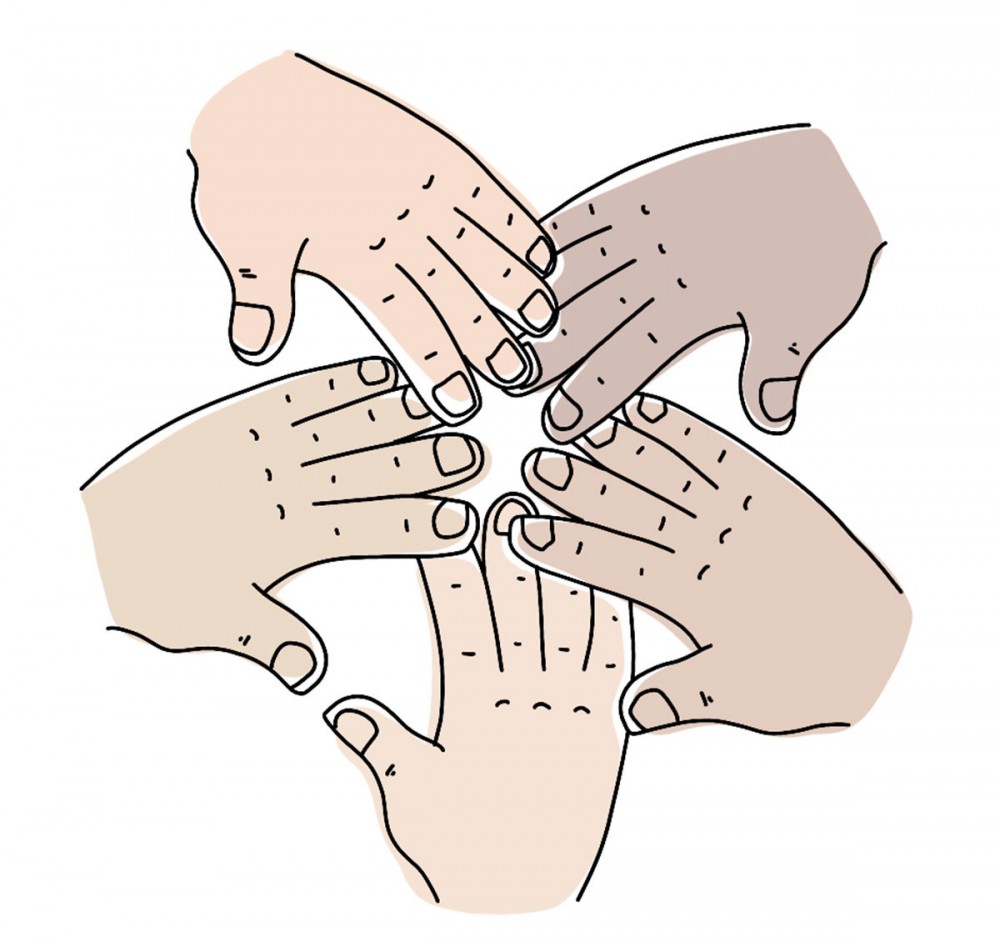
1969
Alcatraz Island in the San Francisco Bay is occupied by the Indians of All Tribes for a year and a half, inspiring more actions throughout California and the United States. Radio Free Alcatraz broadcasts for most of that time, relayed by stations in the Bay Area, Los Angeles, and New York City, spreading the message of Red Power far and wide, from the source.
1970
Occupations multiply, as the Blue Quills residential school and NewStart adult education and vocational school are occupied by Cree, Dene, and Métis people in Alberta and converted into Native-run institutions. Occupations of Fort Lawton and in Tacoma in Puget Sound, as well as by the Pit River Tribe in California, lead to dozens of arrests.

1971
Métis women form a committee against the Adopt Indian Métis program of the Saskatchewan government and secure a meeting and slight concessions. Dene and Cree people from the Cold Lake, Saddle Lake, and Kehewin reserves in Alberta, who are opposed to government cuts to reserve education, pull their children out of schools and occupy the Department of Indian Affairs office in Edmonton for six months, until 1972, when the minister, Jean Chrétien, finally agrees to provide funding for a new school. Chrétien and Prime Minister Pierre Trudeau were still reeling from the defeat of their 1969 White Paper, a plan to phase out the Indian Act without recognizing Indigenous Title.
1973
Wounded Knee and the Calder decision. Following the Trail of Broken Treaties 1972 protest to Washington, D.C., in which the Bureau of Indian Affairs offices were occupied, and the Custer courthouse riot in South Dakota early in 1973, traditional Lakota people and American Indian Movement members reoccupy Wounded Knee at the Pine Ridge reservation for 71 days, under siege by heavily armed U.S. government forces.
The Supreme Court of Canada makes its first major decision on Aboriginal Title, in a case brought forward by Nisga’a Chief and politician Frank Calder, recognizing Aboriginal Title prior to colonial occupation, but with a split opinion on whether or not it was ever extinguished by colonial governments. In 1998, the Nisga’a Final Agreement removes the Nation’s lands from the Indian Act and allows for them to be converted into fee simple private property.
1974
Armed Indigenous actions take place as Anicinabe Park is reoccupied in Ontario and a Secwépemc Nation blockade is set up at Cache Creek in BC. The Native People’s Caravan travels from Vancouver to Ottawa, clashes with police at the Parliament buildings, and establishes a Native People’s Embassy in an abandoned building. Ganienkeh is reoccupied by Mohawk people in New York State.
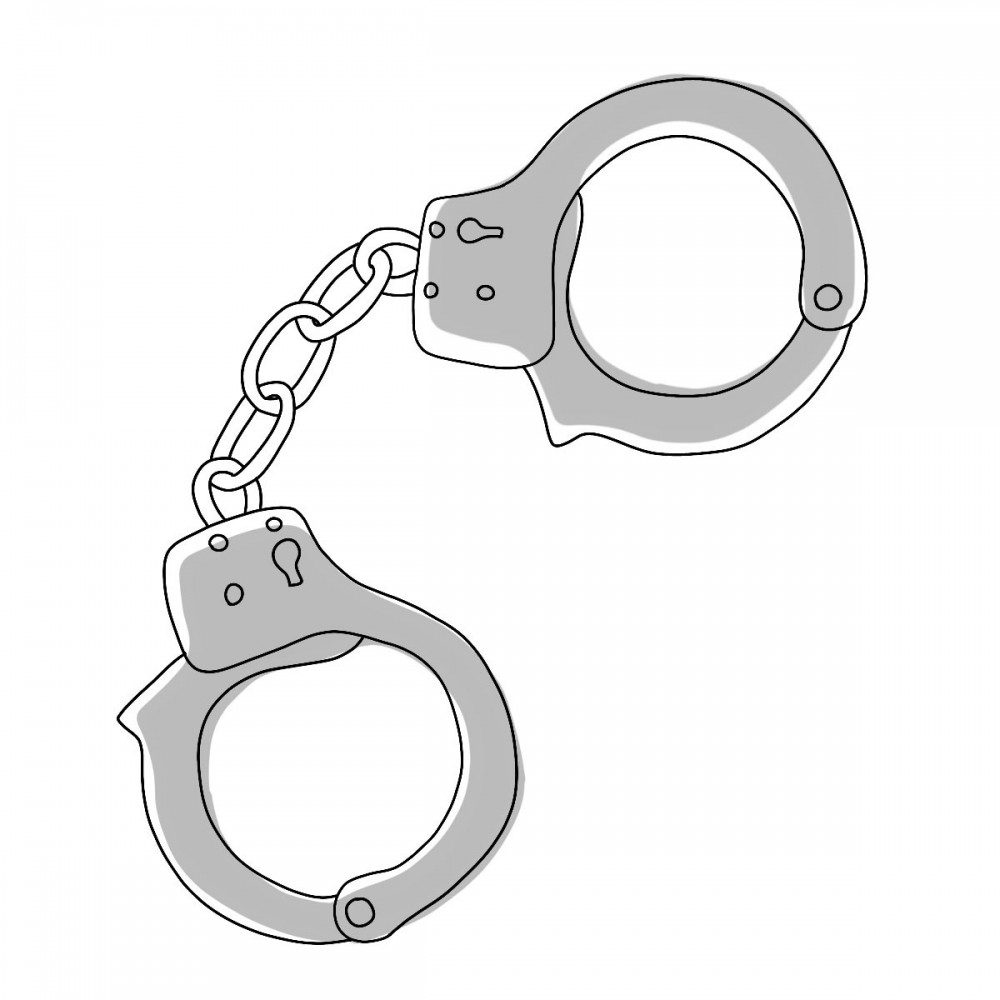
1976
Twenty-six Stó:lō people are arrested after occupying a building formerly used as a nurses’ residence at the site of the former Coqualeetza Indian Hospital and residential school in Chilliwack, B.C., as one of a series of occupations of buildings at the site throughout the 1970s. In 1973, the Coqualeetza Cultural Education Centre had opened there, and an “Addition to Reserve” process still remains underway to turn the site into reserve lands.
1977
Wolastoqiyik (Maliseet) women from the Tobique community occupy the band council offices and arts and crafts hall over loss of status and housing due to sexist discrimination in the Indian Act. Sandra Lovelace of Tobique takes her status case to the United Nations Human Rights Committee. In 1979, dozens of women and children from Tobique walk from Kanehsatà:ke to Ottawa to protest their loss of status and adoption rights.
In 1981, the UN committee decides in favour of Lovelace and finds Canada to be in breach of Article 27 of the International Covenant on Civil and Political Rights. Along with court challenges by Indigenous women from other communities, mounting pressure leads to amendments to the Indian Act in 1985 that partially mitigate sexist discrimination. A century earlier, the General Council of the Six Nations had objected to the Gradual Enfranchisement Act’s exclusion of Indigenous women based on marriage.

1981
Indigenous women occupy the Department of Indian Affairs offices in Vancouver over housing, social conditions, and fishing rights. Fifty-three people, mostly women, are arrested and charged with mischief, and a judge later complains that the Crown is wasting the court’s time with the charges.
1989
Sinixt people set up a long-running camp and blockade of highway construction over an ancestral burial ground in B.C. In 2017, Richard Desautel, a Sinixt man from the Washington side of the border, wins a court case over hunting in B.C. and the Crown loses its appeal. While the Arrow Lakes Indian Band had been declared extinct by Canada in 1956 and remaining members had moved to the Colville reservation in the United States, they began reclaiming their land and rights on the Canadian side of the border in 1989.
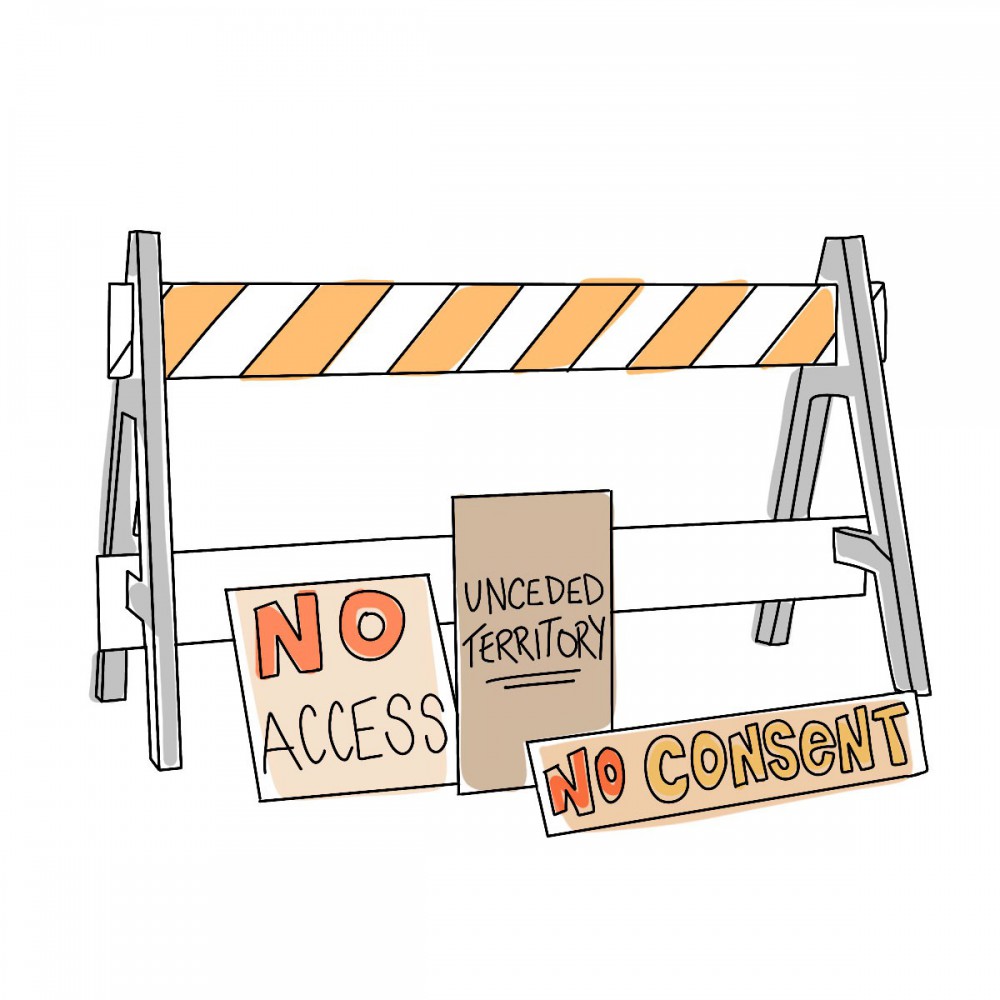
1990
The “Oka Crisis” grips Canada, centred on the Mohawk community of Kanehsatà:ke, where the police and Canadian military lay siege to the community over a golf course expansion, leading to solidarity blockades and actions by Indigenous communities across the country. In South America, Ecuador is also rocked by a nationwide Indigenous uprising with blockades. The Zapatistas of Chiapas, Mexico, later tell the Mohawk people of Kanehsatà:ke that their own 1994 uprising was partly inspired by the Indigenous resistance in the north.
1992
Indigenous women start the annual Women’s Memorial March in Vancouver’s Downtown Eastside, leading in part to the National Inquiry into Missing and Murdered Indigenous Women and Girls and Downtown Eastside community initiatives like the Red Women Rising report in 2019.
1995
Paramilitary police attack land defenders at Gustafsen Lake in Secwépemc territory in B.C. and Anishinaabe territory at Ipperwash in Ontario. Dudley George is killed by Ontario Provincial Police, but the land at Aazhoodena remains as reclaimed territory. The Ts’Peten (Gustafsen Lake) defenders inspire the emerging Native Youth Movement in B.C. and their opposition to the B.C. treaty process.
1997
The Delgamuukw–Gisday’wa Supreme Court decision confirms part of what Gitxsan and Wet’suwet’en Hereditary Chiefs had brought forward in both their 1977 declaration of sovereignty and 1984 court challenge: that their Aboriginal Title to the land had never been extinguished by colonial governments.
1999
The Burnt Church crisis erupts after the Supreme Court of Canada affirms the Peace and Friendship Treaties of the 1700s, which had secured unhindered Mi’kmaq Title and Treaty Rights over their territory. Even a so-called “moderate livelihood” fishery remains unacceptable to police, settlers, and politicians, who react with violence against Mi’kmaq people for simply exercising their rights.
2004
Kanehsatà:ke Mohawks stop their community’s police force from being taken over by outside officers and start an active process of decommissioning the police station and the force itself.
2006
Six Nations of the Grand River women begin land reclamation at a housing development near the town of Caledonia, Ontario. After a failed provincial police raid, the province buys the land and agrees to negotiate with the traditional council. Land defender Doreen Silversmith travels to Oaxaca, Mexico, the site of a simultaneous popular uprising, and the state with the highest percentage of Indigenous language speakers in Mexico.
2012
The Musqueam community reoccupies c̓əsnaʔəm in South Vancouver, with a 200-day-long vigil against a condo development project. In 2018, the City of Vancouver “donates” the land as fee simple property to the band council, while still charging fees for the land transfer, land title, and registration, with taxes also payable to the federal government for the transfer.
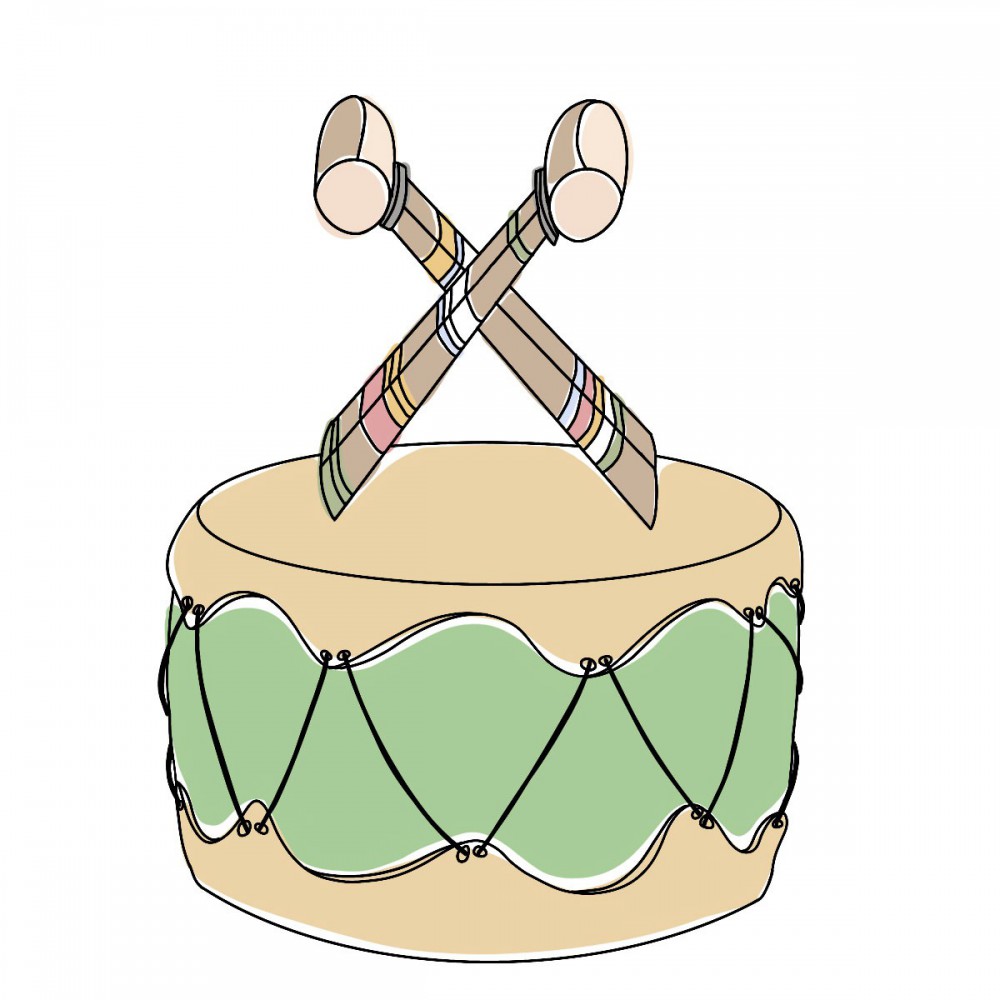
2013
Idle No More round dances, drum groups and flash rallies sweep across Canada in opposition to the Harper government’s omnibus legislation affecting environmental assessment protections. The Elsipogtog Mi’kmaq community blockades and successfully shuts down a natural gas fracking development project, leading to a heavily armed RCMP raid and dozens of arrests.
2014
The Tŝilhqot’in people win a Supreme Court of Canada case confirming Aboriginal Title to specific territory for the first time, but the decision also maintains the right of Canada to infringe upon that title and reiterates the doctrine of discovery as the basis of Canada’s sovereignty. The Klabona Keepers of the Tahltan Nation blockade Imperial Metals’ Red Chris copper and gold mine as part of their ongoing struggle in defence of their land, as when Elders had been arrested in the 2000s in a battle with Shell.
2015
The Lelu Island camp is set up by people of the Tsimshian Nation, who declare victory over the proposed development of a liquid natural gas project two years later, in 2017, as Petronas abandons their plans. The Prince Rupert Port Authority bans development around the island in 2019.
2016
Kahnawá:ke Mohawk community members hold a CP railway blockade in solidarity with the Očhéthi Šakówiŋ (Dakota, Nakota, and Lakota) people of Standing Rock, who are blocking an oil pipeline development project with their own massive solidarity camp. Black Lives Matter women organizers join in solidarity with Indigenous people occupying the Toronto offices of Indigenous and Northern Affairs Canada, in response to the suicide crisis at the Attawapiskat First Nation, a Mushkegowuk (Swampy Cree) community in northern Ontario.
2019
Land Back memes take Native social media by storm, launched by creators like Dene memer Nigel Henri Robinson and Arnell Tailfeathers of the Kainai Blood community. “Land Back” and “Oceans Back” start showing up as slogans on banners at actions and rallies, including the international climate summit and march in Madrid, Spain, as Indigenous youth spread the message far and wide.
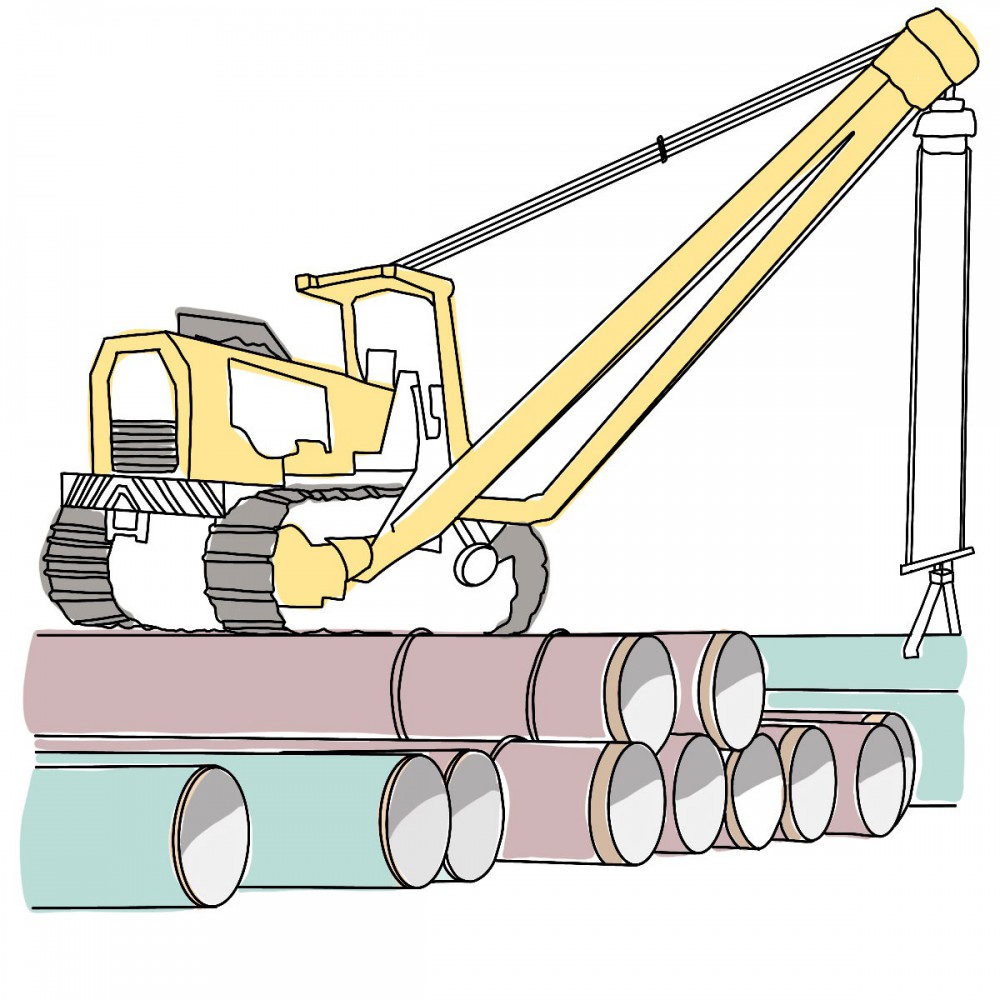
2020
Wet’suwet’en people evict the Coastal GasLink company from their territory, sparking solidarity actions and blockades across the country, as well as multiple police raids, including in Ontario at the Tyendinaga Mohawk community, where two camps are set up to block the CN railway line. While charges have been dropped against Wet’suwet’en people and their supporters, they remain outstanding against the Tyendinaga Mohawk (and also possibly Gitxsan Nation) land defenders, who engaged in solidarity actions.
Update, September 17, 2020: This article originally stated that in 1964, the Survival of American Indians Association was doing actions in the Vancouver area, as well as the Puget Sound area of Coast Salish territory in Washington State. In fact, they were only doing actions in the Puget Sound area of Coast Salish territory in Washington State.


